10 Istrian Gourmet Specialities Not to Miss
June 19, 2022 - You have probably heard that Istria is a culinary treat, but what are the dishes to try? 10 Istrian gourmet specialities not to miss.
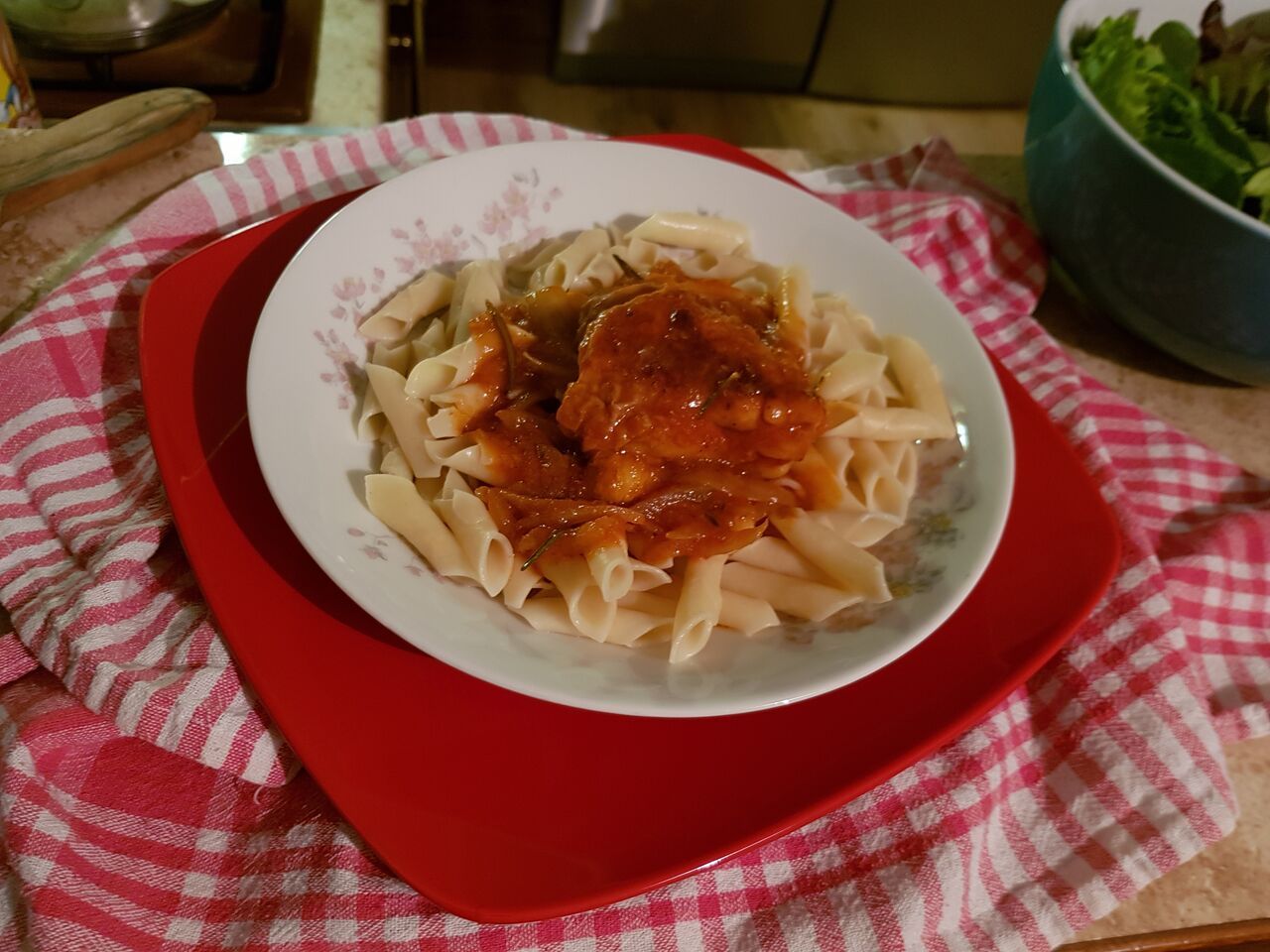

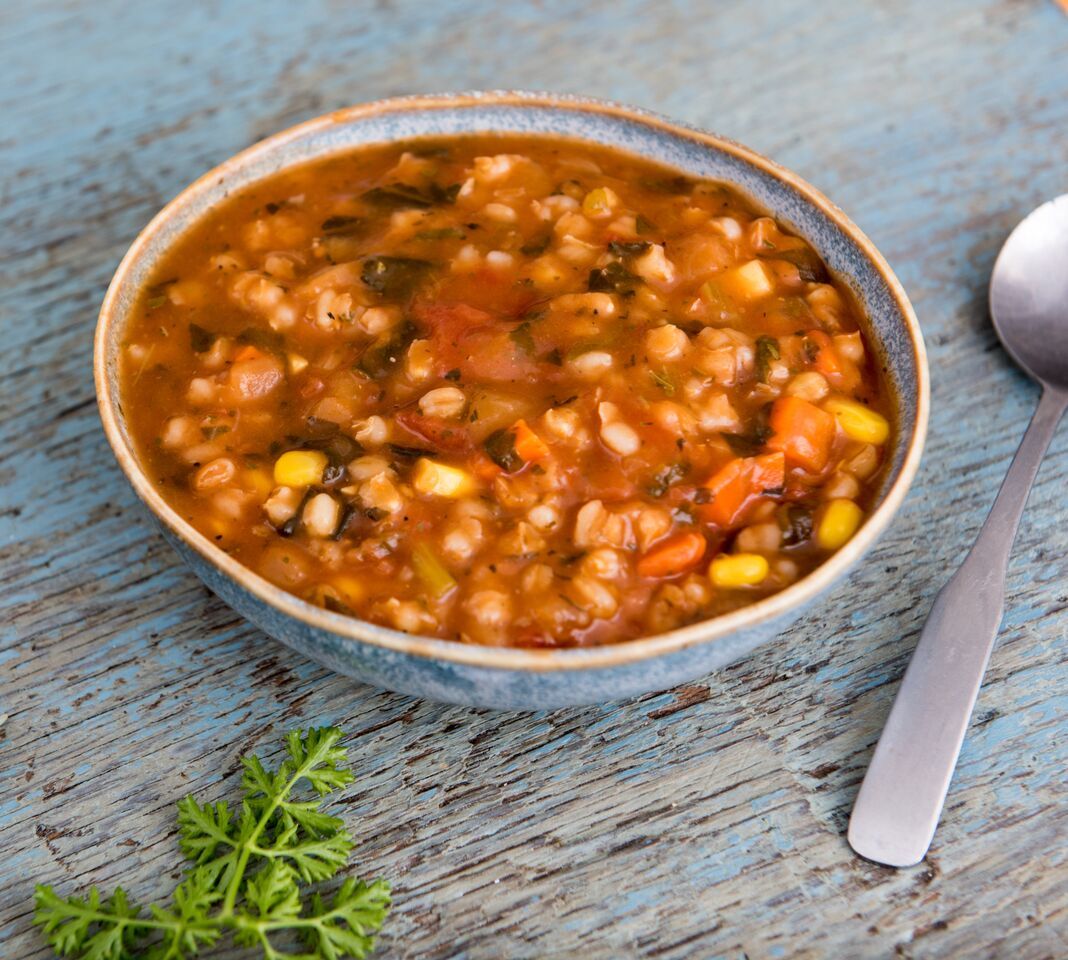
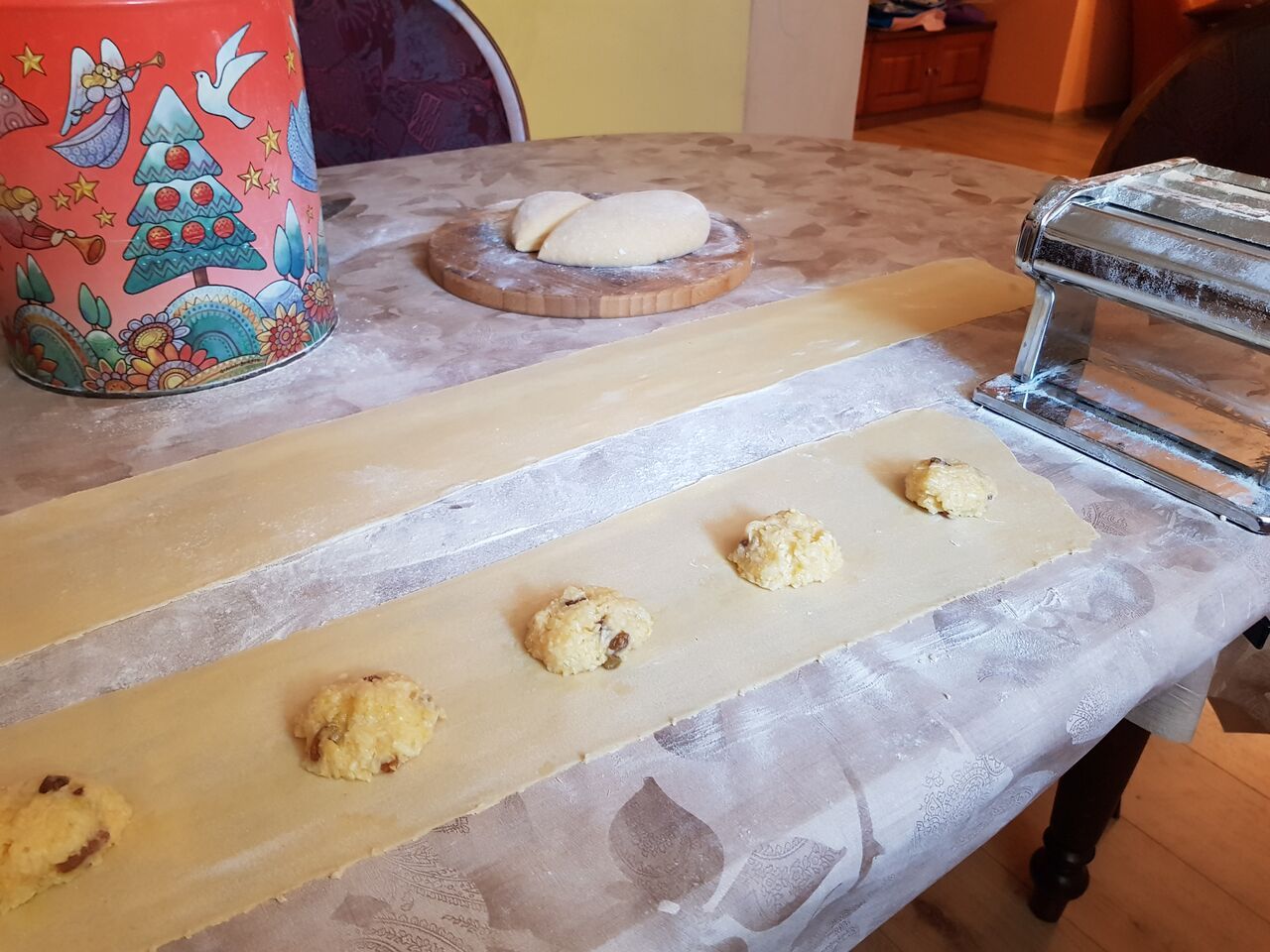
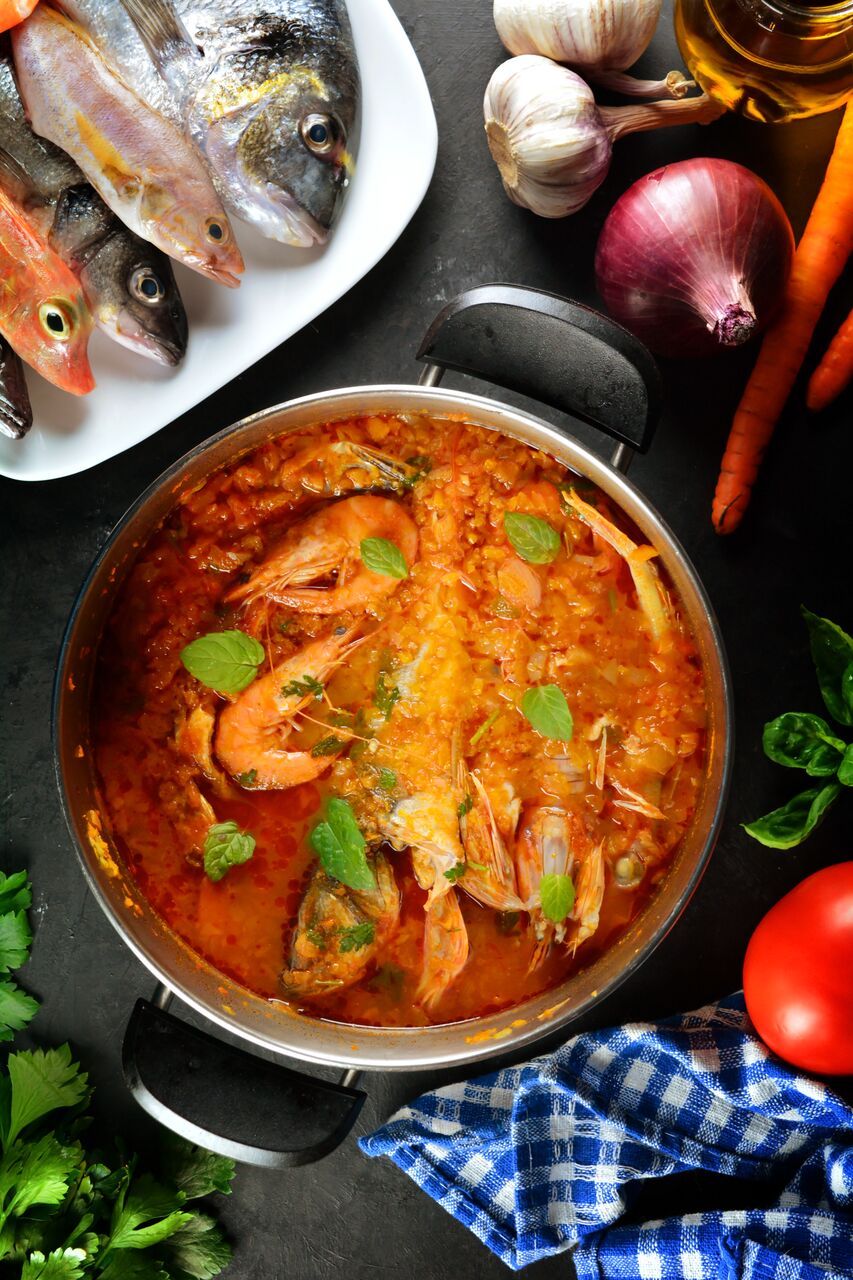



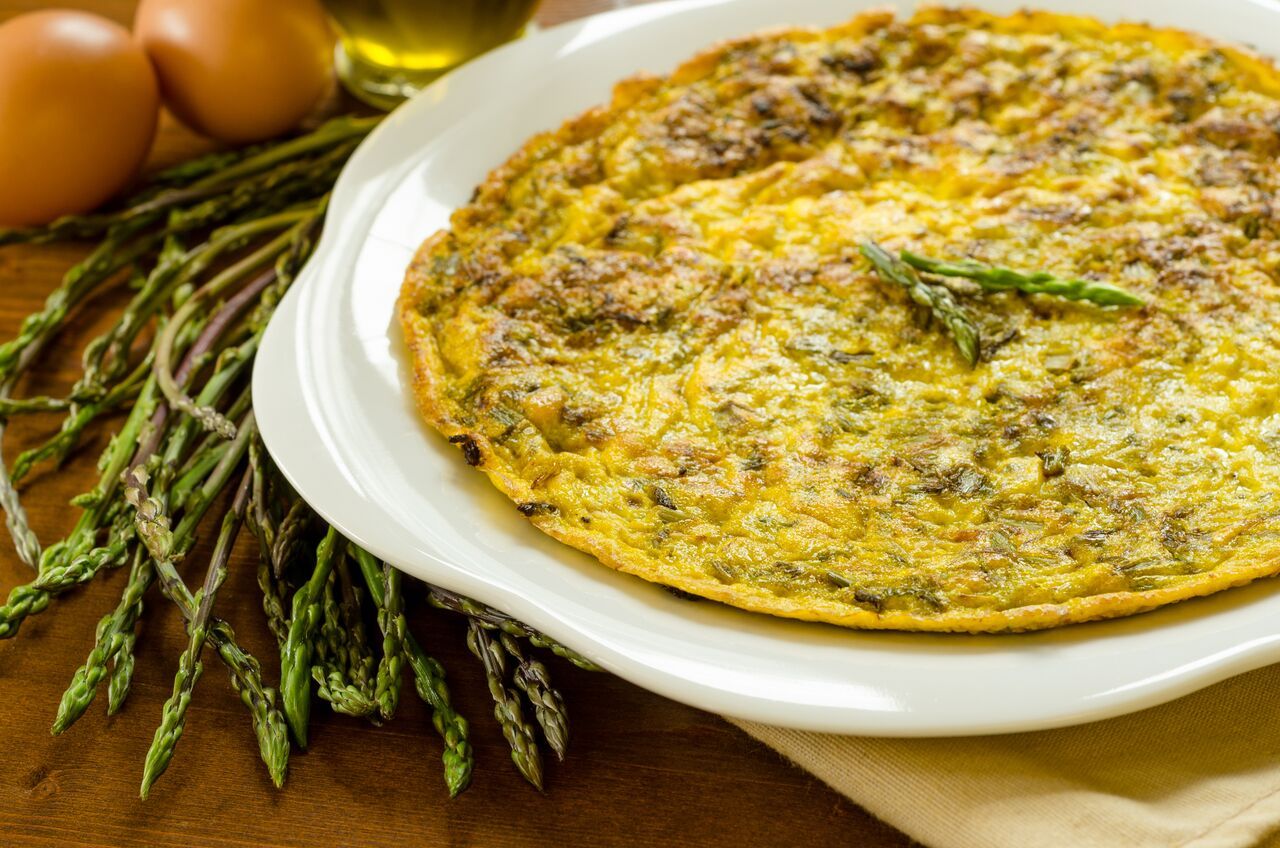
Czech Media Warns Tourists Not to Travel Due to Jellyfish in Istria?
May 27, 2022 - Czech media recently warned Czech tourists about jellyfish in Istria, making them think twice before planning a summer holiday on the Croatian peninsula.
The season could not officially start until foreign media had something, well, out of the ordinary to say, which is exactly what happened in the Czech media about tourists going to Istria.
Namely, a Czech magazine recently published false news that the Croatian coast was flooded with jellyfish, which could ultimately jeopardize the tourist season. The Czechs allegedly called on their citizens not to spend their summers in Istria, to which the Istria County Tourist Board quickly responded, Glas Istre writes.
It is true that fishers had problems with jellyfish last winter, but the Czech media misinterpreted the news, said the Istria County Tourist Board. Guests from the Czech Republic and Slovakia also sent inquiries to the Istria County Tourist Board, and one Slovak who planned to go on holiday in early June asked if the story about the jellyfish invasion was true.
The director of the Istria County Tourist Board, Denis Ivošević, says that they sent a statement to the Czech and Slovak media this week "about the real situation in the Adriatic", which is why they asked for the opinion of experts.
Ivošević assumes that someone from the Czech Republic read a story in Croatian media about fishers complaining about jellyfish over winter and transmitted the news with a delay, interpreting it completely wrong. He pointed out that there was no danger for swimmers and that the news about the mass appearance of jellyfish on the Istrian coast was fabricated. Istrian fishers have also confirmed that jellyfish have almost completely disappeared from their waters.
One Czech magazine, on the other hand, writes that the beaches in Piran, Savudrija, Umag, Poreč, Vrsar, and the entire Italian coast of the Friuli Venezia Giulia region are "covered with transparent slimy jelly".
How about that story to kick off the season?
For more, make sure to check out our dedicated lifestyle section.
Seasonal Food & Wine: Top Chefs Preparing Unforgettable Istrian Gourmet Trip
May 26, 2022 - Seasonal Food & Wine takes place from May 27 to June 10 this year in the charming Rovinj and Bale!
This spring's favorite tourist destination is becoming the center of the most extraordinary gourmet meetings - the rich Istrian tradition, through the diverse offer of dishes, their preparation, and significance, will show all its charms and beauties - on a plate! A unique gourmet spectacle that offers a perfect blend of old and new, traditional and modern, Seasonal Food & Wine takes place from May 27 to June 10 this year in the charming Rovinj and beautiful Bale, and a delicious gourmet offer has been designed just for this occasion.
Top restaurants will prepare well-known traditional Istrian dishes in a modern, unexpected way, tickling your imagination and feeding all your senses. The main role in this magical three-act gourmet rhapsody is played by seasonal, local ingredients from home-grown organic farming. The hardworking hands of the local population have produced the best - respecting tradition and adopting modern trends, lovingly creating products with guaranteed above average quality.
The widely known Istrian cuisine passionately nurtures the glorious past and tradition while cheerfully playing with new and exciting flavors, creating a first-class gourmet experience that leaves no one indifferent.
In keeping with tradition, well-known and award-winning restaurants, led by renowned chefs, La Serra, Anno Domini 547, Restaurant Mediterraneo, Primi Terreni Restaurant & Deli, Restaurant Blu, Laurel and Berry Restaurant, Restaurant La Grisa, and Brasserie Adriatic single out only the best of the best from their offer.
Dishes like marinated gilthead sea bream wrapped in young raštika, wild asparagus and parmesan risotto, boškarin delicacies, Istrian prosciutto and homemade pljukanci with spring asparagus, wild Adriatic dentex, and many other top dishes carefully selected to faithfully convey all the passion that the hosts have for good food, but also to gain new lovers of local Istrian cuisine. Irresistible desserts such as laurel semifreddo, tiramisu made from freshly picked strawberries, apple tart with homemade vanilla ice cream and asparagus powder, fritters with dried fruit and curd mousse, and a large selection of excellent wines from local winemakers will perfectly round off this unique gourmet story.
The Tourist Boards of Rovinj and the municipalities of Vrsar, Bale-Valle, Kanfanar, and Svetvinčenat have joined forces again with the tourist company Maistra and the Association of Craftspeople Rovinj to offer this unforgettable experience. The seasonal Food & Wine event is an unavoidable destination for many travel writers and gourmands, confirming its position as a top gourmet destination globally.
Indulge your feelings and embark on the exciting paths of famous Istrian cuisine because on this journey, you will indeed have many new, undiscovered flavors, beautiful landscapes, and magical sunsets!
More information can be found at: https://www.rovinj-tourism.com/hr/kalendar/22470
For more, make sure to check out our dedicated lifestyle section.
Weekend Bike & Gourmet Tour Combines Cycling, Nature, and Istrian Delicacies
May 9, 2022 - If you can't decide between exploring the natural beauties and tasting traditional Istrian specialities and top-quality wine, then the Weekend Bike & Gourmet Tour is for you!
This two-day recreational bike ride will take place on May 21 and 22 in Rovinj. On each of these two days, participants will ride different trails passing through numerous Istrian areas where you can taste various recognizable gourmet delicacies.
The first day features the trail "Monti", almost 54 kilometers long, where participants can expect local specialties from the Istrian interior, while the trail "Mare" on the second day is 48.5 kilometers long and offers seafood delicacies. In addition, participants will be hosted by Konoba & Pizzeria "Bocca d'oro" in Rovinjsko Selo, "Mofardin," and "Albachiara," where they will have the opportunity to enjoy top Istrian delicacies.
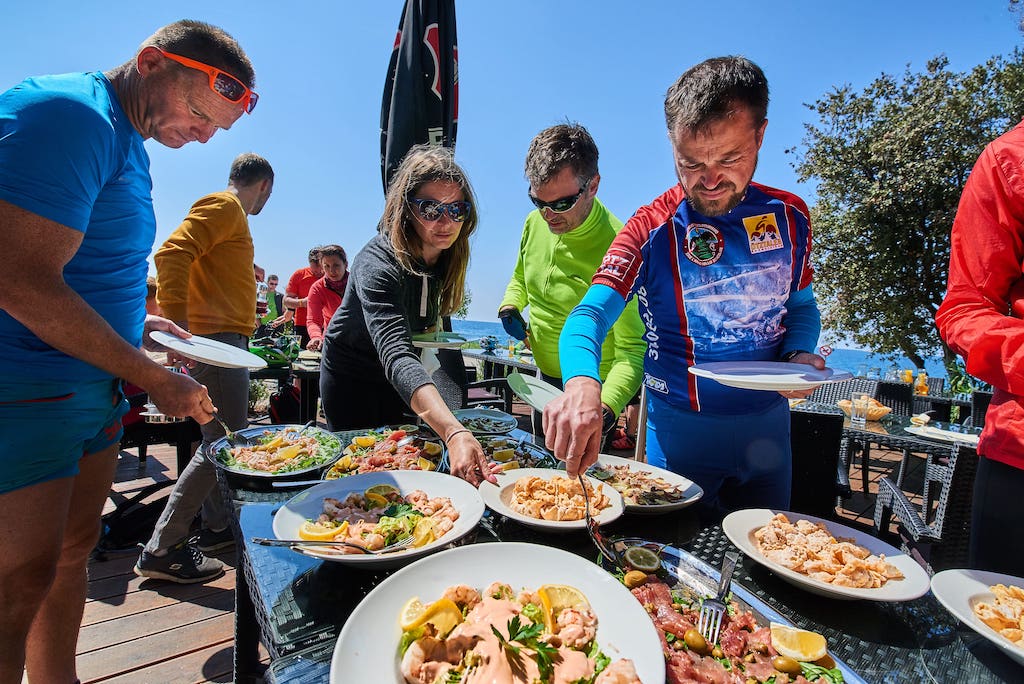
The start of the bike ride on Saturday and Sunday is at 10 am at the Sports Center of Hotel Eden, promising a real adventure full of various surprises at the lookout over the Lim Channel, Zlatni rt forest park, Monkodonja archeological site, Soardo-Bembo Castle, the Fort Forno fortification from the Austro-Hungarian period and much more.
The Rovinj Tourist Board, Association of Rovinj Craftspeople, and the tourist company Maistra made sure that all participants would have a good time and taste the Istrian region's unique delicacies well known around the world. Thus, a professional guide and escort are at their disposal throughout the ride, with meals and drinks provided at the gourmet rest areas in the Istrian Brunch and Istrian Picnic program and a special gift after the bike ride.
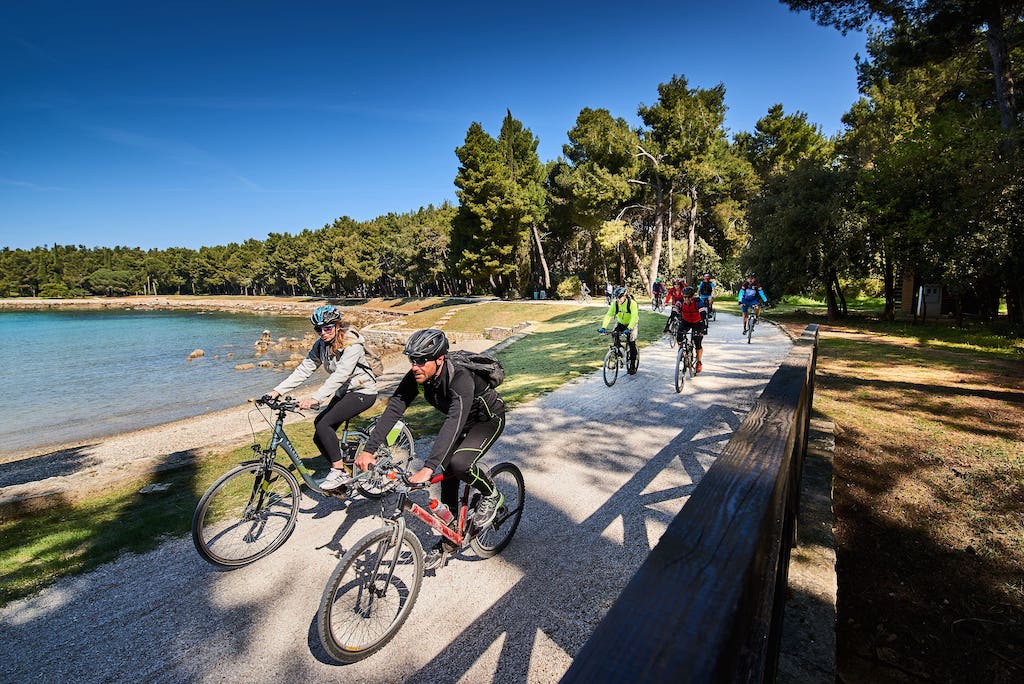
This event is intended for all over 14 years of age who are recreational cyclists, whether they come on MTB bikes, electric, or trekking. This two-day bike ride combines an active vacation in beautiful nature while enjoying the famous Istrian delicacies that few can resist.
This year's 10th Weekend Bike & Gourmet Tour attracts more and more sports lovers and gourmands who are after quality cuisine. This edition also confirms the importance and position of Istria on the map of the world's most attractive destinations to visit.
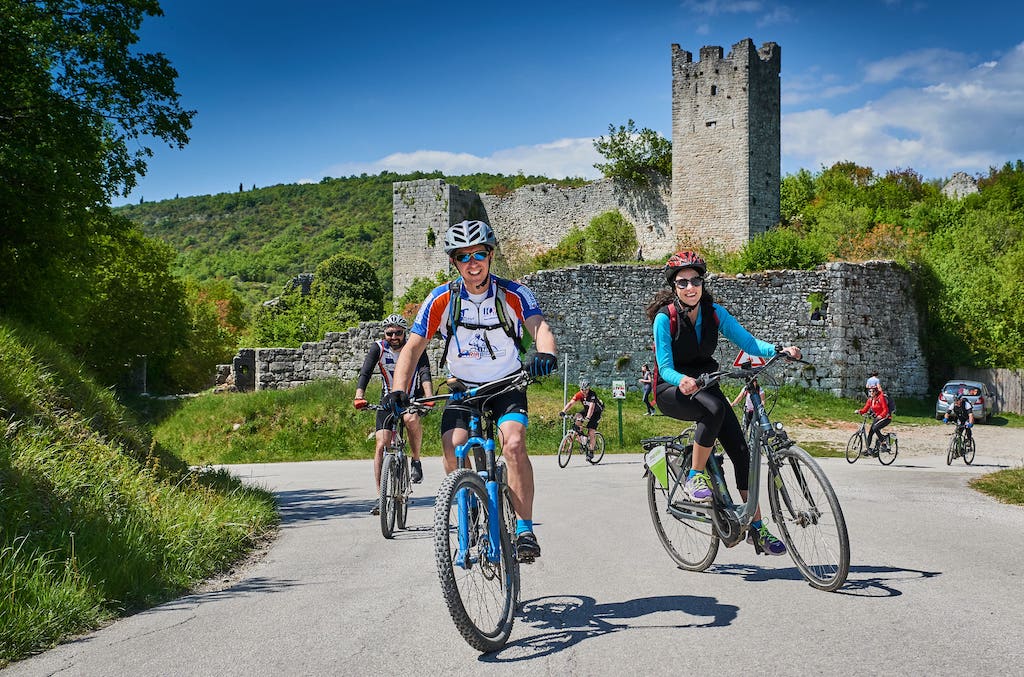
The early booking price for participants who register by May 14, 2022, is 230 kuna for one day, while the two-day package is 400 kuna. After that date, the regular participation price will be HRK 250 per day, and for a two-day package HRK 450.
All those interested can apply by e-mail at This email address is being protected from spambots. You need JavaScript enabled to view it. or on the day of the event at the starting location.
More information about the event can be found at the link https://www.rovinj-tourism.com/hr/kalendar/22450, via email at This email address is being protected from spambots. You need JavaScript enabled to view it., or by phone at +385 (0) 52 800 252.
Maistra has once again prepared promotional accommodation prices for all participants. For reservations and information about accommodation, you can contact This email address is being protected from spambots. You need JavaScript enabled to view it. or call +385 (0) 52 800 250.
For more, make sure to check out our dedicated lifestyle section.
Take the Paths of Rovinj Delicacies this May and Uncover Istria's Gourmet Offer
May 4, 2022 - All roads lead to Rovinj on the first May weekend, where a new spring edition of the unique gourmet event Paths of Rovinj Delicacies is held, justifiably attracting more and more visitors, gourmets, and lovers of Istrian specialties year after year.
From May 7 to 14, some of the most famous restaurants in Rovinj, especially for this occasion, will prepare famous local specialties made from indigenous ingredients of this region. In addition, all visitors will be able to taste local wines from local winemakers.
 If you are going to Istria, head to Brancin da Nino, Graciano, Fortuna, Dream, Santa Roma, or Štorija as fish and meat menus await you at promotional prices. Renowned chefs will prepare homemade seafood pljukanci, black cuttlefish risotto, cod and tuna carpaccio, veal steaks in an asparagus sauce, stuffed pork fillet with prosciutto and cheese, Istrian fuži with chicken žgvacet and many other top delicacies that are simply an unavoidable part of the Istrian region. In addition to a unique offer of specialties, the menus also include top local wines that go well with traditional Istrian cuisine, carefully selected to harmonize the entire gourmet experience.
If you are going to Istria, head to Brancin da Nino, Graciano, Fortuna, Dream, Santa Roma, or Štorija as fish and meat menus await you at promotional prices. Renowned chefs will prepare homemade seafood pljukanci, black cuttlefish risotto, cod and tuna carpaccio, veal steaks in an asparagus sauce, stuffed pork fillet with prosciutto and cheese, Istrian fuži with chicken žgvacet and many other top delicacies that are simply an unavoidable part of the Istrian region. In addition to a unique offer of specialties, the menus also include top local wines that go well with traditional Istrian cuisine, carefully selected to harmonize the entire gourmet experience.
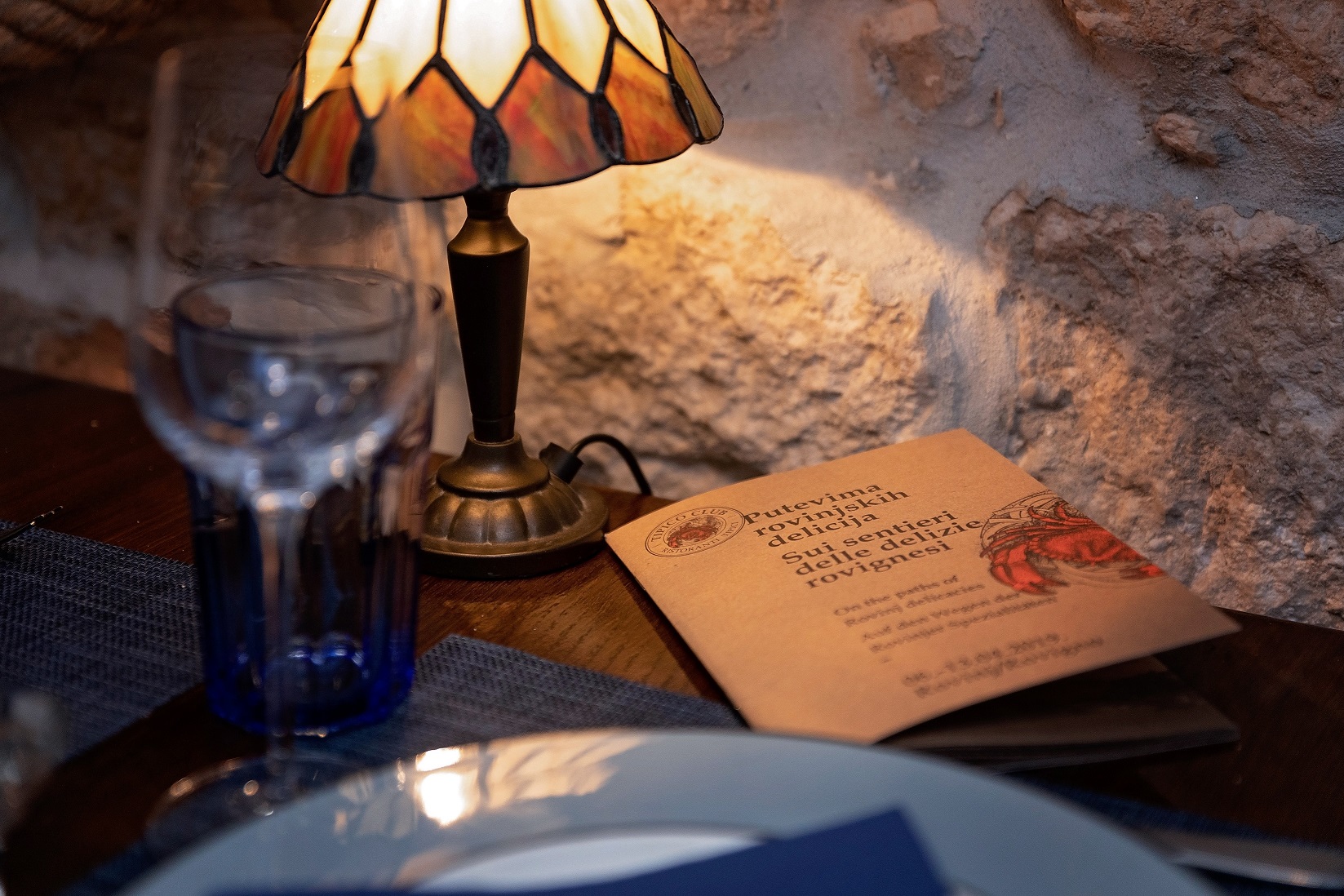
To preserve the rich Istrian tradition but also to present well-known local dishes to all those who have not yet had the opportunity to taste them, the Rovinj Craftspeople's Association, Rovinj Tourist Board, and Maistra Tourist Company joined forces and created this irresistible gourmet story, which is undoubtedly responsible for the recognizability of Istrian beauties, both visual and delicious, around the world.
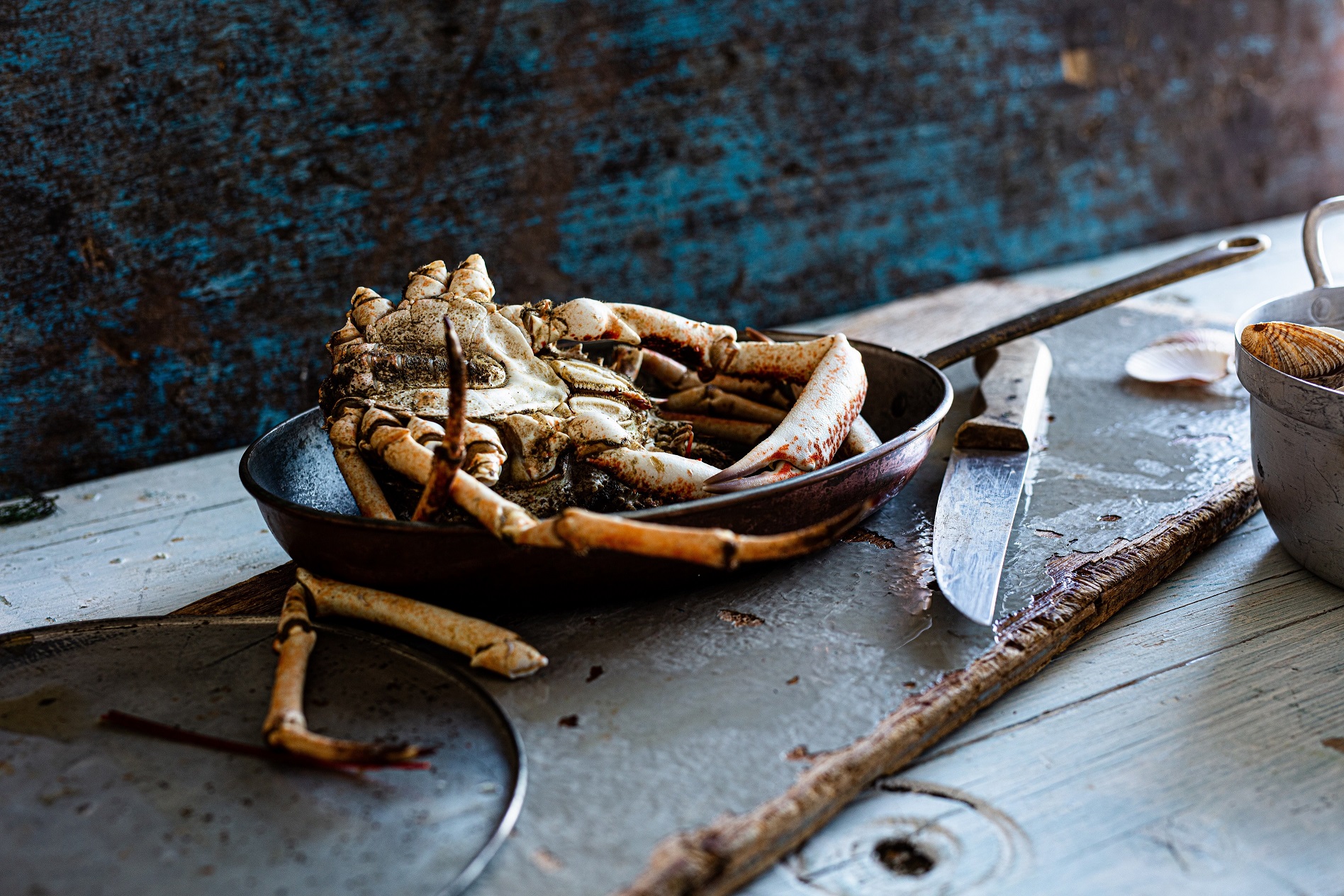
These delicacies can be tasted at a promotional price of 140 kuna per menu. A fantastic way to tickle your palate, don't miss out on this irresistible gourmet offer, and be sure to book your place on time!
Uncover all offers at the following link: https://www.rovinj-tourism.com/hr/kalendar/22464
For more, make sure to check out our dedicated lifestyle section.
Istrian Kids Learn About Environmental Protection Through Workshops
April the 24th, 2022 - Istrian kids have been busy learning about environmental protection and why plastic and other waste shouldn't be discarded in the world's seas and oceans.
As Morski writes, the Istrian Regional Energy Agency (IRENA) has been holding a series of workshops intended for primary school students on marine litter this month. The training sessions were conducted in primary schools which have the status of eco-schools and which last year applied for the Call/Invitation for participation in project activities.
The programme was attended by six primary schools and 300 Istrian kids of different ages from the wider county who learned through these training sessions about what marine waste actually is, what microplastic pollution is and just how this harmful and over-produced form of pollution affects the environment, marine animals and humans.
Marine litter is defined as any persistent, manufactured or processed solid material that isn't of natural origin but is produced, used or discarded by humans directly into the sea or entered into the sea from land sources via rivers, wastewater or winds. It's estimated that about 80% of marine litter comes from land and 20% is generated somewhere else at sea.
Plastic waste, as the most commonly found form of waste littering nature, doesn't decompose over time, but is divided into smaller fragments. Pieces of plastic smaller than 5 mm are called microplastics. In addition to the disintegration of larger fragments, microplastics are formed in other ways, for example, it is often an ingredient in cosmetics, a product of synthetic clothing and the like. Microplastics pose an exceptional and far-reaching threat to the environment and ecosystems, and bulky waste can be a source of the transmission of invasive species. The negative impact of marine litter on the environment is also manifested through pollution with hazardous substances and heavy metals.
It was especially emphasised during these sessions for Istrian kids that every single person, through responsible behaviour, can at least partially influence the reduction of marine litter. Istrian kids were shown how to do their bit by properly separating waste, reducing the use of disposable plastics, participating in cleaning actions and disseminating knowledge.
As part of the wider project, Istrian kids will also take part in beach clean up actions and awareness-raising campaigns. At the end of this month and at the beginning of May, four beach cleaning actions are planned in Istria, during which students will be presented with ways to recycle and monitor marine litter.
For more, check out our lifestyle section.
Eat Know Love Istria: New Edition Reveals Why Istria is Top Gourmet Destination
April 13, 2022 - The new issue of the gourmet magazine Eat Know Love Istria is out exploring stories, experiences, and the heritage of beautiful Istria, all through one of life's greatest joys - food.
Although many call it a hidden gem, Istria has long been recognized around the world for its enticing natural beauty, rich cultural heritage, and excellent gourmet offer that combines modern and traditional in a unique way, providing an exceptional experience to all who find themselves there. Today, this green oasis of playful experiences is, quite deservedly, at the very top of the world's gourmet locations, and research shows that every third guest visits Istria for the smell and taste of traditional local cuisine.
The new issue of the gourmet magazine Eat Know Love Istria brings stories about this magical land of giants and unforgettable gourmet pleasures, and continues to reveal many Istrian attractions and well-hidden secrets, told through customs related to the rich tradition woven around this area. A special treasure lies in the traditions that have been shaped throughout history and still live today as part of the charm in the everyday lives of the local population. One of the best ways to discover this daily is to eat.
Istrian cuisine originates from the sea, millennial olives, and the heritage of vines, wild plants and medicinal herbs, domestic animals, and many fish, which according to the old proverb, once done with the sea should swim in olive oil and wine. The gold of Istria, its extra virgin olive oil is the base of almost every dish in this area, a symbol of quality and true pleasure at the table, and in recent years has won the world's most prestigious awards.
"Istria is simply magical - almost like the perfect film set with a sense of timelessness and at the same time mystery in all its traditional beauty. In fact, Istria is so special, different, that just watching the sunset will instantly fill you with positive emotions and make you aware that you are just enjoying a region that is the best example of the romantic Mediterranean! Istria is my eternal inspiration for everything I do, and only a part of everything that Istria represents can be found in the new gourmet magazine Eat Know Love Istria", said the editor Zorica Bocić, who does not hide her fascination with Istria and love for everything she does to promote the Istrian region.
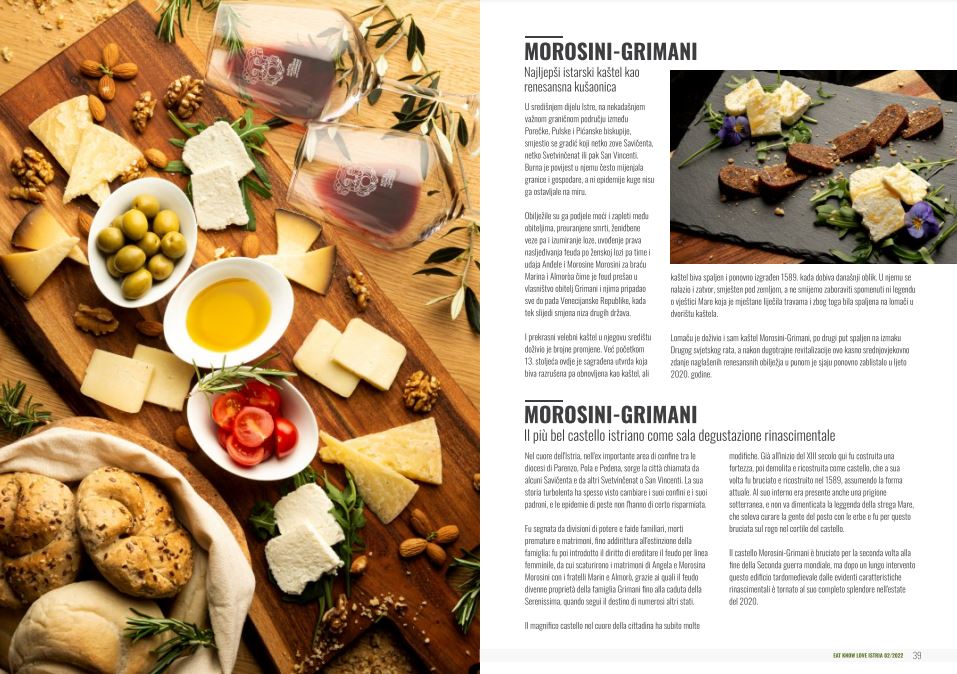 The gourmet magazine, a result of the cooperation between the tourist company Maistra and the tourist boards of Rovinj, Vrsar, Bale, Kanfanar, and Svetvinčenat, as well as the Association of Craftsmen Rovinj, presents many traditional recipes that nurture Istrian cuisine and celebrate the history and tradition of this region. Famous Istrian prosciutto and aromatic cheese, organic fruits and vegetables from the fertile Istrian crljenica, freshly caught fish from the clear Adriatic, wines from sunny vineyards on the slopes of fairytale hills. These are the original elements of Istria that the producers and caterers combine into a colourful and recognizable eno-gourmet mosaic. It is a combination of the products of the Istrian country and the hardworking hands of the hosts who have been slowly but unstoppably climbing the ladder of success for decades.
The gourmet magazine, a result of the cooperation between the tourist company Maistra and the tourist boards of Rovinj, Vrsar, Bale, Kanfanar, and Svetvinčenat, as well as the Association of Craftsmen Rovinj, presents many traditional recipes that nurture Istrian cuisine and celebrate the history and tradition of this region. Famous Istrian prosciutto and aromatic cheese, organic fruits and vegetables from the fertile Istrian crljenica, freshly caught fish from the clear Adriatic, wines from sunny vineyards on the slopes of fairytale hills. These are the original elements of Istria that the producers and caterers combine into a colourful and recognizable eno-gourmet mosaic. It is a combination of the products of the Istrian country and the hardworking hands of the hosts who have been slowly but unstoppably climbing the ladder of success for decades.
We can also discover many interesting events that attract more and more visitors to Istria every year and gather only the best of the best from the world and domestic gourmet scene. For those who are curious, the magazine contains stories and legends of the Istrian region, as well as a small dictionary of the Istrian dialect so that they can fully indulge in this unique experience. While traveling in Istria, every road and turn will surely take you on a new gourmet adventure, related to the history and culture of this region.
The magazine is available at the link: https://infovrsar.com/media/ddvot15s/eat-love-know-hr-it-web.pdf, and can also be found on the tourist boards of Rovinj, Vrsar, Bale, Kanfanar, and Svetvinčenat.
For more, check out our lifestyle section.
Rambunctious Rovinj Seagulls Attacking and Mugging People for Food
April the 11th, 2022 - Ever been mugged by a seagull? I have. I was three when it happened and the bird stole an entire pastry from my hands and although I find it funny, it probably isn't that amusing when it's happening to you fairly regularly. Rovinj seagulls have decided that attacking and mugging people is an easy way of getting by in that Istrian town.
As Morski/Jurica Gaspar writes, the story of seagulls from Istria tells how adaptable and intelligent some animals are. Rovinj, like the whole of western Istria, has been fighting these birds for years now, especially after the landfills were closed, meaning that the birds literally moved to the cities in search of food, and this is where the problems of the people who live there began. Naive tourists have also been the victims of Rovinj seagulls and their strategic attacks and food theft.
''We came out of the bakery and started walking down the street, and a seagull flew in, past my wife's back, right between the two of us, and stole her food, all of it! When the bird attacked us, he flew down from the air, as fast and accurate as a rocket! Along the way, he flapped at us with his wings and behaved aggressively,'' said Ivica Brusic from Rijeka, who was unpleasantly surprised by the courage of these flying predators. ''We tried to record a second seagull attack… but we didn't succeed,'' added Brusic.
They settle in on the town's rooftops and make unbearable noises all night
Rovinj city authorities have been struggling with their resident seagull problem for a long time now, and Rovinj seagulls not only attack people, but also pollute the city by dropping litter all around that they've been going through in search of food, they leave excrement all over, and they also create intolerable levels of noise, which a Rovinj resident complained about a few months ago:
''The problems with the seagulls begin at about four in the morning, they like to settle on the roofs of buildings. I'm appealing (to the city, to the communal services, to vets, to whoever), on behalf of all of the residents of this red zone, to try to solve the problem with the seagulls that have settled on the roofs of buildings and start making awful noises at four in the morning regularly, disturbing people's sleep. People need to be able to sleep and then get up and go to work (especially those who work shifts), and at night it's impossible to sleep because of these birds. The problem is growing every year because more and more of them are flying over and settling here. Please help, this is no longer normal, it's becoming impossible to sleep. Their natural habitat is the islands and the coast, not buildings. We understand that they're a protected species, but who will protect us from them?!'' a letter addressed to the City of Rovinj reads.
Rovinj responded that they have been participating in seagull population control project for several years now using the only method approved so far - by replacing real eggs with fake ones.
Their natural habitats and food sources are under threat
However, it isn't only western Istria or other coastal Croatian cities in general that have this problem, it seems the ever-brash seagulls have become a global problem, but it isn't their fault, but ours. Their cries are most often associated with the sea and the coast, but as their natural homes are under threat, they're simply moving more and more inland to settle in cities, the BBC wrote about this.
From the seagull's perspective, our cities, or the roofs of houses, are a series of islands surrounded by steep cliffs. Nesting there brings many benefits to these birds - it helps protect them because fewer predators visit human architecture. There is also often no shortage of food on the streets below the buildings. As a result, urban seagull colonies are growing all over Europe but also elsewhere.
Like many other species that have adopted urban areas as their homes - rats, pigeons, foxes - seagulls have an image problem. The tabloid press in the UK describes seagulls as public enemies because of incidents in which birds bombard pedestrians, either to defend their young or to snatch food straight from the hands of naive tourists, much like Rovinj seagulls. Their relentless noise and the clutter they create provokes anger among the people who are forced to live near them.
When large seagulls begin to nest in urban areas, the size of their colonies inevitably increases. So, what is it that is attracting these birds in increasing numbers to human-dominated places and cities? Should they now be classified as an urban species? Part of the reason for their growing numbers is landfills where garbage isn't being burned, but instead covered with earth every day. Seagulls quickly take advantage of this source of food. Looking for discarded food in landfills and usually succeeding, they manage to raise more young, more of whom eventually survive. Their population has jumped sharply as a result. With all this, there is another force at play. Industrialised fishing practices meant that their natural food sources were depleted, while their nesting sites were often hampered by human activity.
In recent times, with the rehabilitation of old landfills, but also with the depleted fishing stocks in the sea, seagulls tend to migrate to where they will most easily find food and raise their young, and these locations are typically cities. Practice has shown that the replacement of eggs with fake ones successfully halved their numbers in Porec three years ago, but their problem will continue to be an issue, as long as people continue to disturb their natural habitats.
For more, make sure to check out our lifestyle section.
Istria 100 by UTMB: 9th Edition Runs through Istria this Weekend
April 6, 2022 - This year's Istria 100 by UTMB race in Umag gathers more than 1,000 runners from around the world. Among them so far is the largest number of Elite runners who have all announced breaking the track record!
Marko Gregurić, CEO of Istra 100 by UTMB®, and Alen Paliska, the director of the race, unanimously stated:
“A race full of excitement awaits us! Most of these runners have already run the track in one of the previous years, but the track changed significantly in one of the segments compared to last year. Many of our loyal competitors who have been coming for years commented that the changes have further raised the track's difficulty. This is why the race has become even more attractive for those always looking for a bigger challenge. We are especially pleased with the great response of the Elite Runners, whose participation further confirms the value and quality of our race in the world!"
Depending on the length of the trail they have chosen, from Friday, April 8 until Sunday, April 10, runners will start from Labin (168 km), Lovran (128 km), Buzet (68 km), Motovun (40 km) and Grožnjan (20 km). Runners can travel through the most picturesque parts of Istria. From the beginning to the end of the race, runners will encounter sections of technical terrain, passages through ancient medieval towns, deep forests, and muddy valleys, all enhanced with enjoying the beautiful view that stretches to the Adriatic Sea.
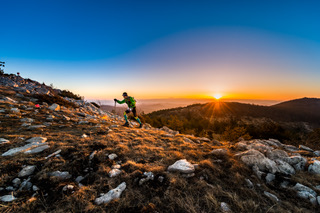
Dejan Hren
All roads and races lead to the finish line in Umag, where volunteers and hosts will greet the competitors. Each runner will be awarded a finisher's medal, and the most successful will be on the podium in Umag on Sunday at 1 pm at the winner’s ceremony.
Traditionally the strongest international ultra trail race in Istria is this year part of the UTMB® World Series trail platform. The goal of the World Series trail platform is to provide runners with exclusive access to the top trail sport but also the final of the world series of races, UTMB® Mont-Blanc. UTMB® World Series consists of 30 international trail races, and Istria 100 by UTMB® with that it is part of this selected society and the first race in the history of the World Series cycle of races.
Those interested can follow the racers through the LiveTrail® web and application. In addition, the organizer made additional efforts to provide insight into watching the race via Sports Television and video transmission on the Istria100 by UTMB Facebook page, where you can follow the runners LIVE.
Istria 100 by UTMB continuously confirms the high quality of organization and service to the race participants, which is why the Civil Headquarters of Istria and all locations support the race.
The City of Umag, Umag Tourist Board, HEP, Ina Croatia, global sponsors UTMB® World Series Hoka, Dacia and Wahoo, and other partners and sponsors recognized the potential and impact of Istria 100 by UTMB on the development of sports, tourism, and related services in Istria and Croatia, and have been happy to continue their cooperation for many years.
Ultra trail race Istria 100 by UTMB will be held from April 8 to 10, 2022
● Race start: Labin (168 km), Lovran (128 km), Buzet (68 km), Motovun (40 km) and Grožnjan (20 km) )
● Live monitoring of the race via Sports Television and video transmission on the Facebook page Istria100 by UTMB
● Monitor live results through the LiveTrail® web and app
● Presentation of Elite Runners will be held on Thursday, April 7, 2022, at 6 pm in Umag at the sports hall, Školska ulica 14
● More information about the race is on the official race website
To read more about sports in Croatia, follow TCN’s dedicated page.
Projects Aimed at Both Tourists and Residents Launched in Labin, Rabac
March the 30th, 2022 - In the gorgeous Istrian towns of Rabac and Labin, projects have been launched which are aimed not only at tourists, which is often the case in towns which rely heavily on visitors from abroad, but also at locals.
As Poslovni Dnevnik writes, at the assembly of the Tourist Board of the City of Labin, Labin Mayor Valter Glavicic announced some new investments and works that will follow in both Labin and Rabac, and in addition to tourism, they're also important for the local population, as reported by local portal Glas Istre/The Voice of Istria.
One of the major investments is the announced architectural study for the arrangement of the very centre of Rabac, more precisely for the Rabac waterfront. The first meetings are already getting underway, which is what has officially kickstarted the preparation of the study because public bodies have been invited to get better acquainted with the planned news, followed by hoteliers, private renters, local enterprise owners, as well as the companies and local residents of Rabac. The entire process is being led by architect Idis Turato.
The plan, as can be heart, is to make something everyone can be proud of from the waterfront in Rabac, and it is an area spanning approximately seven hectares. After all of the discussions and public participation, the study will define the micro locations within the project, which will require an architectural solution.
"I'd like to invite you to be active participants in something that will define the further development of Rabac as a destination for the next thirty years. Everything is related to the activities of not only hoteliers and those in the hospitality and catering sector, but also to all those who have something to do with tourism, all of the residents of Labin, and therefore I'm inviting you to get involved with as many suggestions as possible, because at the moment we have a "white paper". That's why it's up to all of us to do quality work together for the future of this region. This approach is different than the usual one, it isn't the classic bureaucratic one, there will be a lot of public participation through talks, which is extremely important considering what kind of project it is,'' said Glavicic.
He announced that the most favourable bidder for dealing with the very core of the old town had now been selected, with whom a contract on the main project would be signed.
"After the preliminary design and location permits, the company Fluming from Rijeka was selected and the main project is now underway to complete the reconstruction of the communal infrastructure, starting with all of the installations, ending with the ground floor and replacement of all stone surfaces. I believe that the project will be finished by the end of this year,'' said Glavicic
In about twenty days, work will begin on the second phase of the reconstruction of the road through Kapelica, which is being financed by the County Road Administration, with partial co-financing from the City of Labin, and it is an investment worth about 8 million kuna in total. The first phase was worth about 5.5 million kuna, and when the works of the second phase are completed, the road will be completely renovated with a sidewalk built all the way from the roundabout at the beginning of the settlement to Morcaki.
Works worth around 7.5 million kuna are also being completed in Vinez, most of which are being co-financed with money from EU funds, through which Vinez received sewerage, a new water supply network and a complete road from the school to Marciljani. The mayor of Labin also mentioned that investments have recently been made in the road and in the area of Ripenda, and next year, the plan is to continue towards the settlement of Ripenda - Kosi.
An important topic is the Agglomeration project worth a massive 776 million kuna, which is probably the largest project in the history of Labin, for which the director of Vodovod Labin signed a contract with the Government of the Republic of Croatia during an Assembly, which co-financed it all with a grant worth more than 4 million kuna.
“The project of all projects is definitely the Agglomeration and we expect to get all of the necessary location permits this year. The requests have been submitted, and after that, I hope, by the spring of next year, the building permits will be issued, from the purifier on the site of the former TPP Vlaska, to the sewerage network. I believe that we'll be able to start some of the work next year. Many things are related to this project, as are the works on the roads because part of the sewerage system will be pulled along the routes of roads, for example in Gornji Rabac, so we'll renovate a part of the road as part of these works. These are just some of the investments and I believe that next year will definitely ho down in the history of our region in terms of the strength of the investments that are set to follow. Things are heading in the right direction, we're going to continue to build Labin together, and most importantly, develop the infrastructure in all parts of the city,'' concluded Mayor Glavicic.
For more, make sure to check out our lifestyle section.


